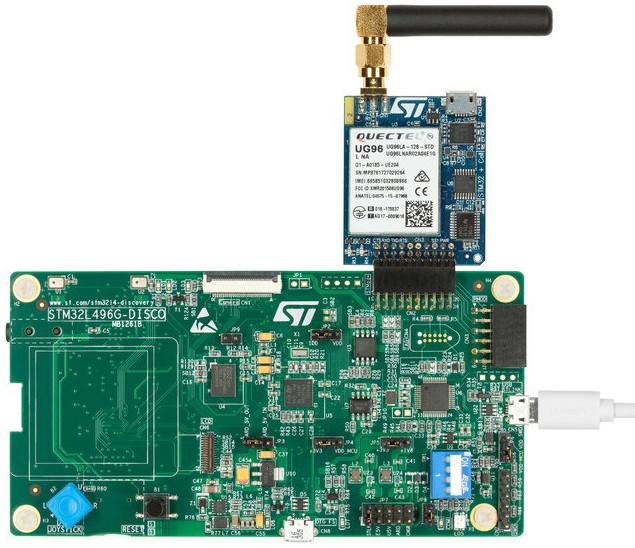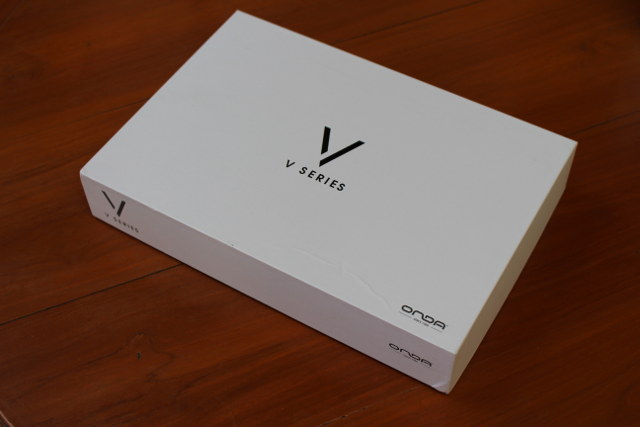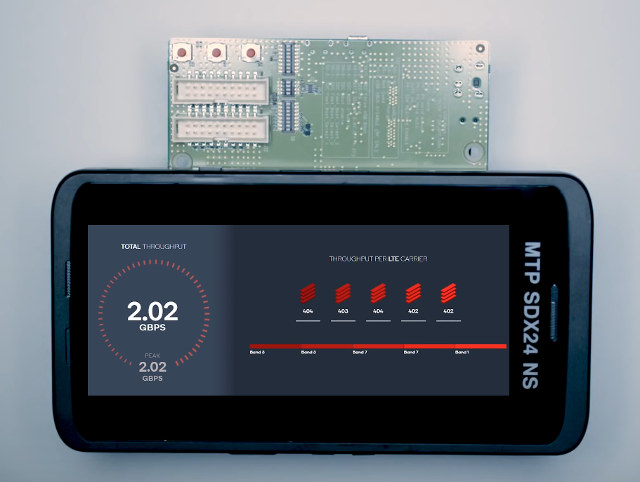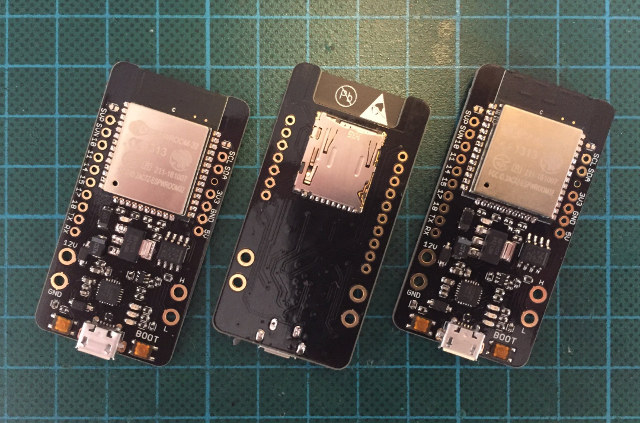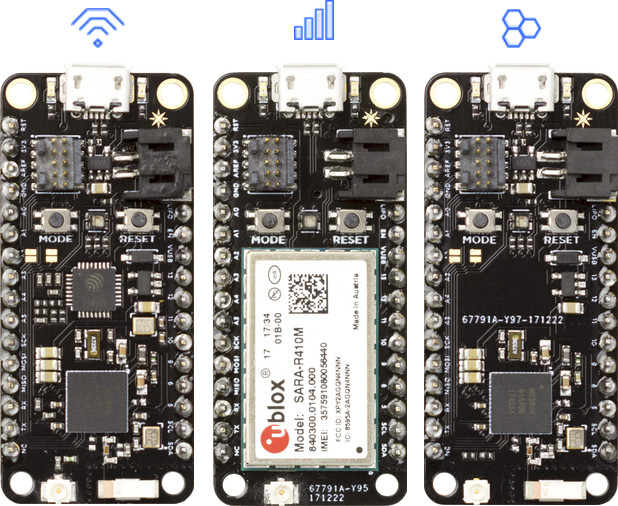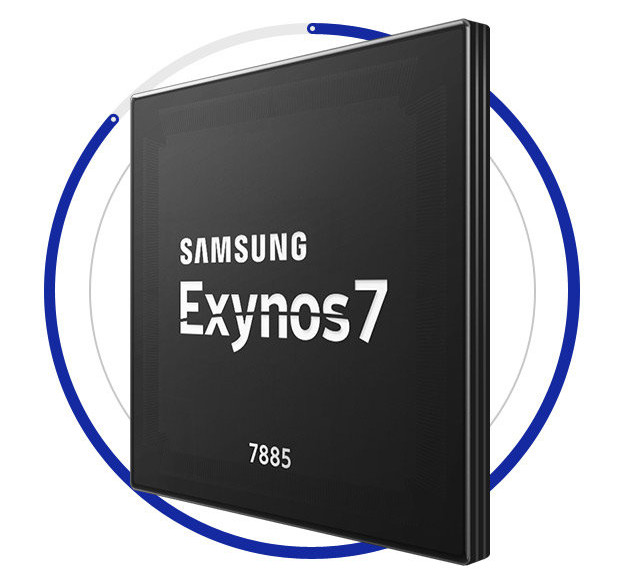Earlier this year, Espressif Systems had unveiled their ESP32-LyraTD-MSC Audio MiC HDK (Hardware Development Kit) which features an ESP32-WROOM module, a 4-mic array DSP, 3 microphones, an audio jack, and various I/Os. I received the board a couple of weeks ago, and while there’s no public information released yet, the company provided me with ESP32-LyraTD-MSC User Guide in English. Eventually, I’d expect Google Assistant and Amazon Alexa to be supported, but in the meantime I had to leverage my (lowly) Chinese language skills to get started since the kit is pre-loaded with firmware connecting to Baidu DuerOS voice assistant. ESP32-LyraTD-MSC Unboxing The kit came in a bland Espressif Systems carton box. Inside the package, I could only find one kit comprised of two boards. The bottom board read ESP32_MicrosemiDSP_Mainboard-V1, and does not show much apart from marking for connectors, headers and the power switch. While the top comes with eight […]
STMicro Introduces Two STM32 Discovery Kits with 2G/3G or 4G LTE-IoT Cat M1/NB1 Connectivity
Embedded World 2018 trade fair will take place on on take place on February 27 – March 1 in Nuremberg, Germany, and we’re starting to see some company announce new products and solutions for the embedded market. STMicro has just announced their showcase their very first cellular development kits at the event, based on a display-less variant on their 32L496GDISCOVERY Discovery board with cellular add-on boards: P-L496G-CELL01 Discovery kit with with a 2G/3G modem P-L496G-CELL02 Discovery kit with with an LTE-IoT Cat M1 (eMTC) / NB1 (NB-IoT) / 2G model Now the company has not started designed their own cellular modem, but instead relying on QUECTEL modems. Both kits share most of the same specifications: MCU – STMicro STM32L496AGI6 Arm Cortex M4F MCU@ 80 MHz with 1 MB Flash, 320 KB RAM in a UFBGA169 package On-board memory – 8 Mbit PSRAM On-board + external storage – 32 KB I2 […]
Onda V18 Pro (Allwinner A63) 2K Tablet Review – Part 1: Unboxing, First Boot, and Antutu 7 Benchmark
Announced last June, Allwinner A63 is the latest tablet SoC from the company, with a quad core Cortex A53 processor and a Mali-T760MP2 GPU capable of driving 2K displays. One of the first tablet to feature the SoC is Onda V18 Pro with a 10.1″ 2560×1600 high resolution display, 3GB RAM, 32 or 64GB internal storage, and the capability to play 4K H.265/H.264/VP9 videos (obviously downscale to the display resolution). I was interested in checking it out, and GearBest sent me a sample of the 32GB flash version. I’ll do a two part review, starting with unboxing, and first boot where I’ll run CPU-Z and Antutu, before publishing the rest of the review in a few weeks once I got to use it more and performed more tests. Onda V18 Pro Unboxing The tablet comes is a white “V-series” box, Onda likely uses for all their VXX tablets.They just differentiate […]
Qualcomm Snapdragon X24 LTE Cat 20 Modem Supports up to 2Gbps Download Speed (in Theory)
Qualcomm can already achieve peak download speed of 1.2 Gbps over 4G cellular network in Snapdragon 845 processor thanks to its Snapdragon X20 LTE modem, but the company has been working on an even faster modem with Snapdragon X24 modem support LTE Cat.20 download speed of up to 2 Gbps. That’s even faster than Gigabit Ethernet, at least in theory, as with all wireless technologies you can only achieve the maximum throughput in the lab, and upload speeds will be lower – but still decent – at up to 316 Mbps. You’d also have to find a Telco that can handle such speeds. Qualcomm X24 cellular modem specifications: LTE Category – 20 Downlink Features 7×20 MHz carrier aggregation Up to 4×4 MIMO on five carriers Maximum 20 spatial streams Full-Dimension MIMO (FD-MIMO) Up to 256-QAM Peak Download Speed – 2 Gbps Uplink Features Qualcomm Snapdragon Upload+ 3×20 MHz carrier aggregation […]
CAN32 ESP32 Development Board is Designed for CAN Bus Applications
If you want a WiFi + BLE board to play with CAN bus, one option is to go with the versatile Olimex ESP32-EVB Board, but if you need something more compact CAN32 board might be worth a look as the board is specifically designed for projects and testing of the ESP32 in a CAN-BUS environment. CAN32 board hardware specifications: Wireless module – Espressif Systems ESP32-WROOM WiFI + Bluetooth LE module External storage – micro SD slot CAN Bus chip – Texas Instruments SN65HVD230DR CAN-BUS transceiver with sleep mode Expansion Unpopulated headers exposing: SVP/SVN, GPIOs, I2C, UART, GND, 3.3Vm 5.0V 4 larger vias for CAN H and L, 12V (max 15V), and GND Debugging / Programming – micro USB port via Silicon Labs CP2102N USB to UART Misc – C&K soft-touch low-profile buttons for reset and boot; 4x LEDs for power, ESP, UART Tx/Rx Power Supply 5V via micro USB port […]
Human Readable Decoding of /proc/cpuinfo for Arm Processors
One of the most common way to get CPU information is to check the content of /proc/cpuinfo. For example, this is the output I get from running the command on NanoPi NEO (Allwinner H3) board:
|
1 2 3 4 5 6 7 8 9 10 11 12 13 14 15 16 17 18 |
cat /proc/cpuinfo Processor : ARMv7 Processor rev 5 (v7l) processor : 0 BogoMIPS : 2400.00 processor : 1 BogoMIPS : 2400.00 Features : swp half thumb fastmult vfp edsp thumbee neon vfpv3 tls vfpv4 idiva idivt CPU implementer : 0x41 CPU architecture: 7 CPU variant : 0x0 CPU part : 0xc07 CPU revision : 5 Hardware : sun8i Revision : 0000 Serial : 5400503583203c3c040e |
Many fields are self-explanatory, but what about CPU implementer and CPU part numbers? Those are values stored in Arm’s CPUID Base Register, and 0x41 looks up to Arm implementer, while 0xc07 refers to Cortex A7. But I had to look it up to find out. One solution would be to decode those values in the kernel, but the developers won’t do that probably because it may break user-space programs that rely on hexadecimal values. So instead, Riku Voipio decided to write and submit a patch for lscpu program found in util-linux package. The patch has been merged so the new ID mapping feature should be supported in util-linux 2.32 and greater. In the meantime, […]
Particle Unveils Three nRF52840 Bluetooth 5 Boards: Argon (WiFi), Boron (LTE), and Xenon, as well as Particle Mesh Technology
In the last year or so, Bluetooth has gotten an upgrade with the release of Bluetooth 5. The new protocol works on several existing platforms, but if you want support for the full set of Bluetooth 5 features such as longer range and higher bandwidth, we’ve seen you need a recent chip such as Nordic Semi nRF52840. However so far, AFAIK you had to buy Nordic Semi own development kit for play with nRF52840, and now Particle has announced not one, but three low cost development boards powered by nRF52840 chip starting at just $9, and supporting their newly announced Particle Mesh technology. So for some reasons, it appears they did not go with Bluetooth Mesh. Particle Xenon – Bluetooth 5 + Mesh Xenon is the cheapest model with the following specifications: SoC – Nordic Semiconductor nRF52840 Arm Cortex-M4F 32-bit processor @ 64MHz with 1MB flash, 256KB RAM Storage – […]
Samsung Exynos 7885 Processor Launched for Mid-Range LTE Smartphones
After unveiling Exynos 7872 Series5 hexa core processor in January, Samsung has now introduced a higher end Series7 octa-core processor with Cortex A73 and 53 cores, and a Mali-G71 MP2 GPU named Exynos 7885. The new processor also supports 18:9 Full HD+ displays, LTE Cat 12 for download up to 600 Mbps, dual camera, 4K 30 fps video decoding/encoding, and comes with an LPDDR4x memory interface. Samsung Exynos7 7885 processor specifications: CPU – Dual-core Cortex-A73 @ up to 2.2 GHz, and Hexa core Cortex A53 @ up to 1.6GHz GPU – Arm Mali-G71 MP2 Memory I/F – LPDDR4x Storage I/F – eMMC 5.1, SD 3.0 Display – Up to WUXGA (1920×1200), Full HD+ (2220×1080) LTE Modem – LTE Cat.12 3CA 600Mbps (DL) / Cat.13 2CA 150Mbps (UL) Connectivity – Wi-Fi 802.11ac Dual-band, Bluetooth 5, FM Radio GNSS – GPS, GLONASS, BeiDou, Galileo Camera – Rear 21.7MP, Front 21.7MP, Dual camera: 16MP+16MP […]



